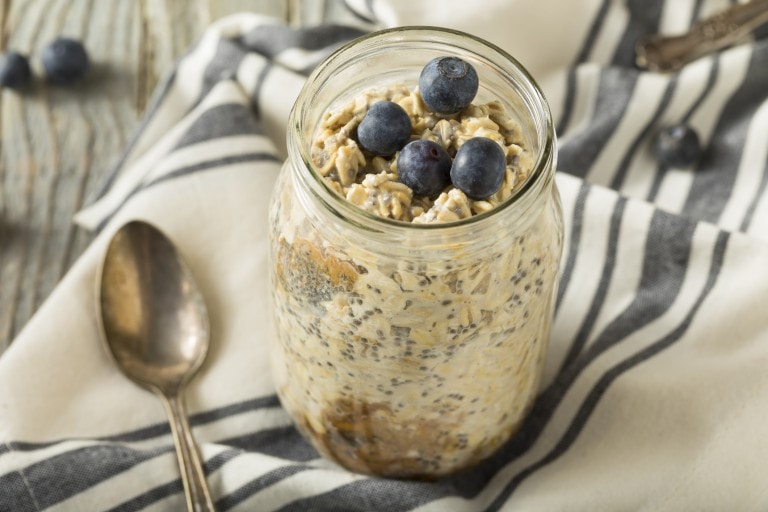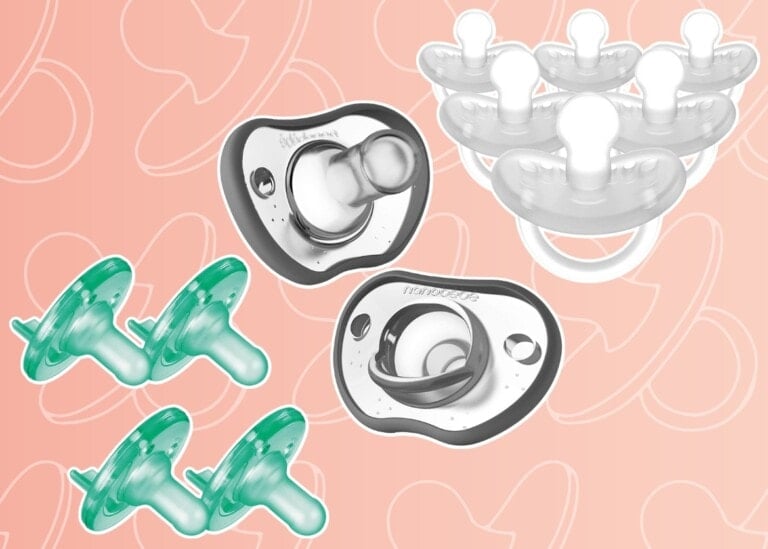Combination feeding is a popular choice, with one in three mothers adding formula by the time their baby is six months old.1 Whether you plan to breastfeed exclusively for your baby’s first few months before switching to formula, or if you’re considering supplementing formula with breast milk from the start, there are some essentials to consider for successful combination feeding.
Combination Feeding: How To Do It Successfully
Start with Breastfeeding
The American Academy of Pediatrics recommends exclusive breastfeeding for the first six months of your baby’s life. The benefits of breastfeeding are well-known and include:2
- stronger immune systems
- less gastrointestinal distress
- fewer colds and respiratory illnesses
- fewer ear infections
- better vision
- lower rates of infant mortality, including those from Sudden Infant Death Syndrome
- less overall illnesses
- six times less absenteeism for parents from their workplace
So, even if you plan on supplementing formula, starting your baby off with breast milk is an excellent choice.
Several myths surrounding breastfeeding may influence your decision to switch entirely over to formula or add formula unnecessarily. Although supplementing with formula remains a personal choice, making informed choices is beneficial and is more likely with the correct information. The following myths are common among those who choose to supplement with formula:3
Myth: Starting breastfeeding is a bad idea if you plan to go back to work.
While it is true that returning to the workplace while breastfeeding adds an extra layer of planning and consideration, it is possible to exclusively breastfeed on maternity leave and then continue to express or pump your milk at work. You may also supplement with formula during the workday and continue breastfeeding when you’re with your baby. Any amount of breastfeeding is better than none.
Myth: Many women do not produce enough breast milk.
Most women produce enough milk for their babies. Since breast milk is made whenever milk is expressed or nursed from the breast, breast milk is ready on-demand. Even mothers of multiples, such as twins and triplets, can produce enough milk for their babies. The size of your breasts is not a factor in how much milk you can produce. If you are concerned about medical circumstances resulting in low milk supply, such as a hormonal imbalance or physical anomaly, speak to your healthcare professional.
Myth: Some mothers do not have nutritional breast milk.
Human milk is nutritionally perfect for human babies—all of the calories and nutrients, and fat that your baby needs are contained in your milk. Human milk is exceptionally digestible. Your baby’s stomach is tiny, so feeding 10 to 12 times per day is perfectly normal and is not an indication that your milk is lacking in nutrition.
Myth: Supplementing with formula ensures your baby is getting enough food.
Your baby was born to feed exclusively off the breast. In addition to breastfeeding, formula could result in a reduction of your milk supply or overfeeding your baby and causing stomach upset.
Myth: Mother’s milk doesn’t come in until the third day.
Your breastmilk is ready to go even before your baby is born. The first milk, called colostrum, is different than the breast milk that comes in after a few days after birth. However, colostrum is an essential source of antibodies and nutrition for your newborn. Since your baby has been receiving nutrition while in your uterus, they do not need as much food. Colostrum helps your baby pass their first stools and is the perfect food for your newborn.
When to Consider Combination Feeding
Combination feeding is a personal choice that can be made for many reasons. One of the main reasons for supplementing with formula is when you return to work. In this case, partial weaning is the viable option for working moms who may not be able to pump at work due to the nature of their work or their schedule or even a lack of a place to pump. If your workplace does not have a private area for you to pump, and this is something that you wish to do, you should feel comfortable requesting this space. Another reason for partial weaning is if you have been pumping already and are ready to take the next steps and wean from pumping during your work hours.
Another popular reason for combination feeding is to have your partner or other family members involved in the feeding process; some partners desire to participate in the bonding that occurs during feeding. Although there are many different ways to bond that does not involve feeding, this is a personal choice and one you should make together.
It’s worth noting that if you want to combination feed because your baby is older, once your baby is one year old, they can switch to partially feeding with cow’s milk. Formula is no longer necessary after one year of age. Additionally, if supplementing with formula helps you extend the breastfeeding relationship, it’s an excellent decision. Breastfeeding for as long as you and your child desire will continue to offer all the same benefits it has since the beginning.
The Benefits of Extended Breastfeeding
Maintaining the breastfeeding relationship provides many benefits to both mother and baby, including:
- Continued skin-to-skin bonding and comfort for the baby
- Reduced risk of childhood obesity
- Improved oral development
- Reduces the risk of developing allergies and asthma
- Improves immune functioning
- The more breast milk your baby receives, the greater the benefit. Even the 50 mL of breast milk per day helps improve your baby’s health and boosts immunity.
- Saves money as breast milk is free and formula is not
- All of the nutritional benefits previously mentioned.
How to Partially Wean Your Baby
As long as you continue to express milk, you will continue to make milk. Many nursing mothers can wean their babies down to a couple of feedings a day and still maintain their milk supply at this lower level. However, your baby may need a slower schedule to get used to bottle feeding. It is also wise to go slowly by removing one feeding at a time to avoid being uncomfortable with breast engorgement, plugged ducts, and infections.
The following advice comes from Happy Family Organics’ Happy Baby Expert Rachel G. MS, RD.
- If you are striving for an increased milk supply, your goal would be to nurse the baby, supplement with formula and then pump. This can be quite an intensive process for a mom of a newborn, and while some moms may find this schedule worthwhile, you may reevaluate your feeding goals over time.
- If the goal is not to eventually exclusively breastfeed, or if mom plans to wean to formula, simply breastfeeding, then providing formula may be a great strategy.
- Your pediatrician and/or lactation consultant will guide you as to how much and how often you should be giving your baby a bottle of supplemental formula.
“Often, when a bottle is introduced, a baby’s latch becomes more shallow, and they begin to enjoy the faster flow of milk. Unfortunately, this can make breastfeeding more difficult. To help make transitioning between bottle and breast easier, use paced bottle feeding and a slow flow nipple. You can also try hand expressing before putting baby to the breast so that milk is ready to go, just like with a bottle,” says Rachel.
Additional tips for partial weaning while supplementing with formula:
- Do not begin supplementing with formula until breastfeeding is going well and is regular.
- Maintain a regular pumping or hand expressing schedule to avoid reduced milk supply, if necessary.
- Introduce a bottle around 4-6 weeks of age. Introducing the bottle later than this may make it more difficult for the baby to adapt to bottle feeding. Any earlier may result in breast refusal (nursing strike).
- Keep bottle-feeding sessions short, with only half an ounce of pumped breast milk or formula to start.
- Choose a nipple that has a slow flow to closely mimic the flow of breast milk.
- If a slow flow nipple seems to frustrate your baby, try a faster flowing nipple.
- Try offering a bottle before your baby starts to get too hungry—this means before they start crying, approximately one to two hours after their last feeding.
- Try offering a small amount of formula at the end of a nursing session to get your baby used to the bottle without interfering with nursing or milk supply.
- If necessary, leave the room and have another caregiver provide the bottle feeding.
- Never force-feed your baby a bottle.
- Once your baby starts showing signs of fullness, such as regurgitating milk, gagging, falling asleep, or turning away from the bottle, stop the feeding.
Be sure to discuss any issues or concerns that arise with your health care professional. Be on the lookout for signs of engorgement, plugged ducts, and infections such as fever, chills, and feeling ill.






























